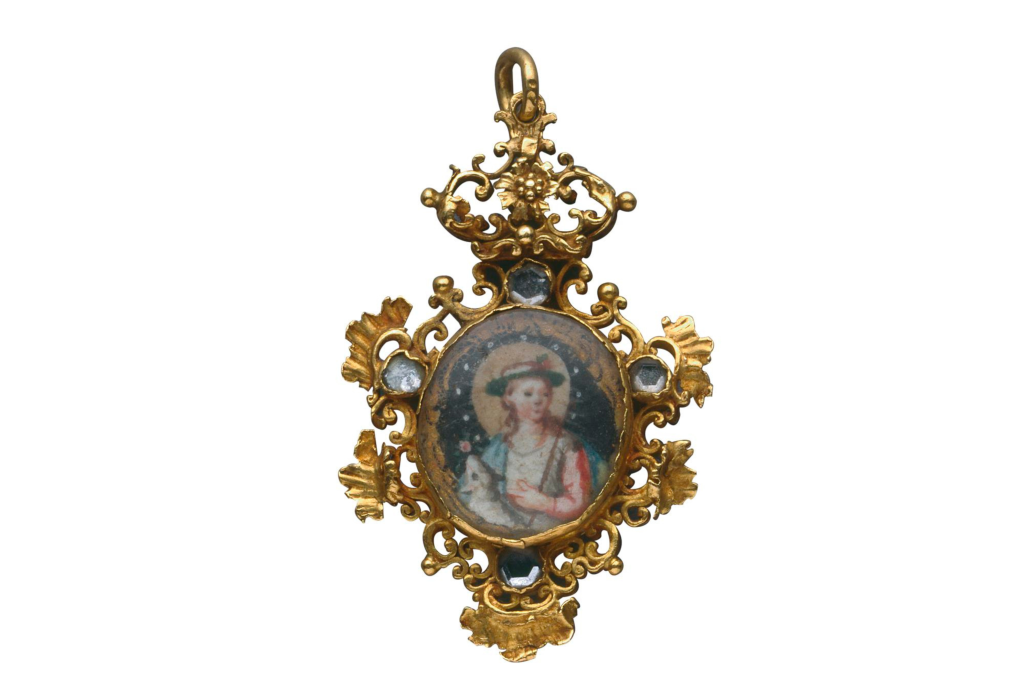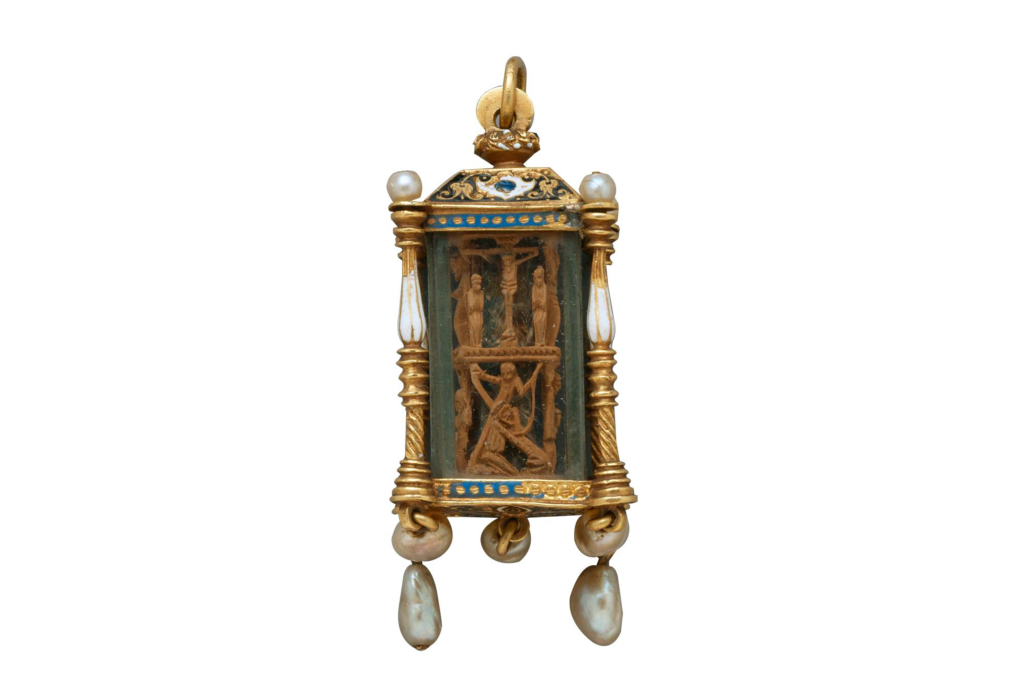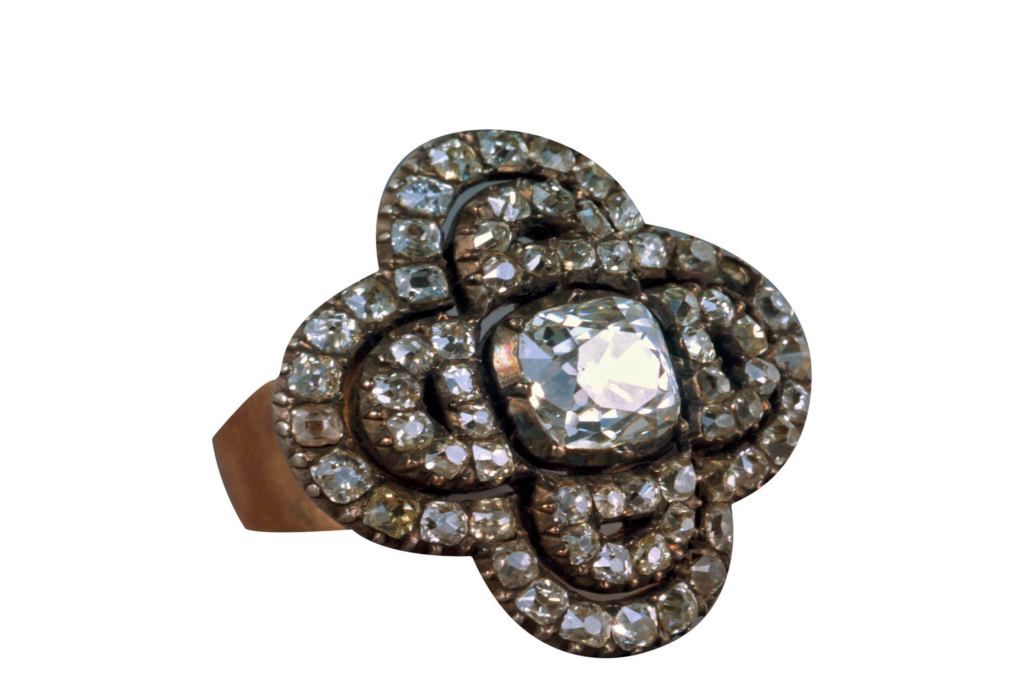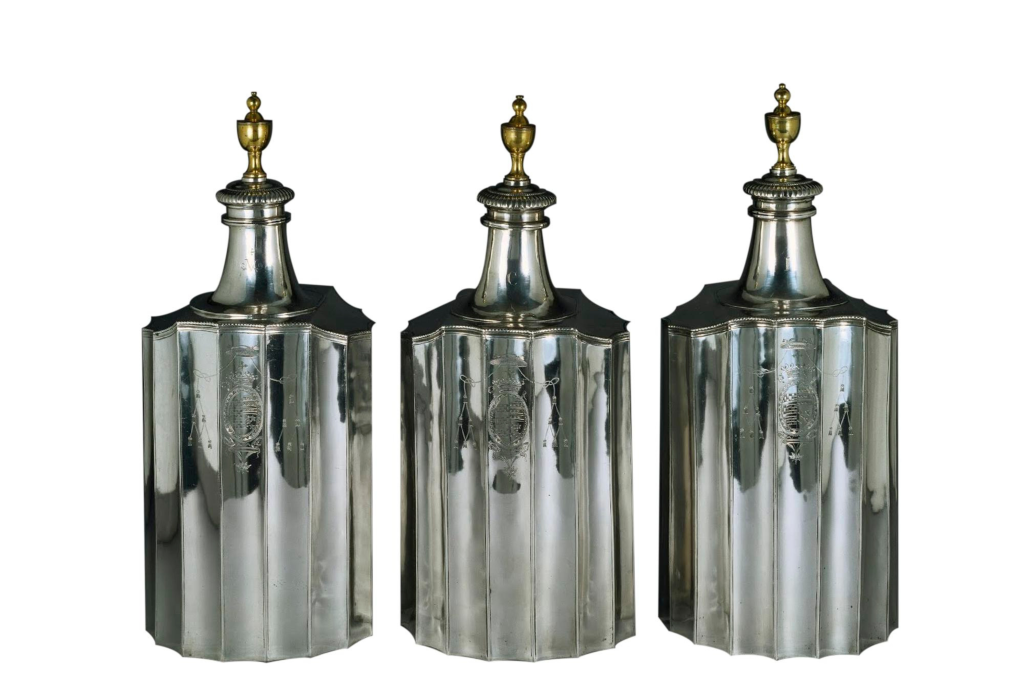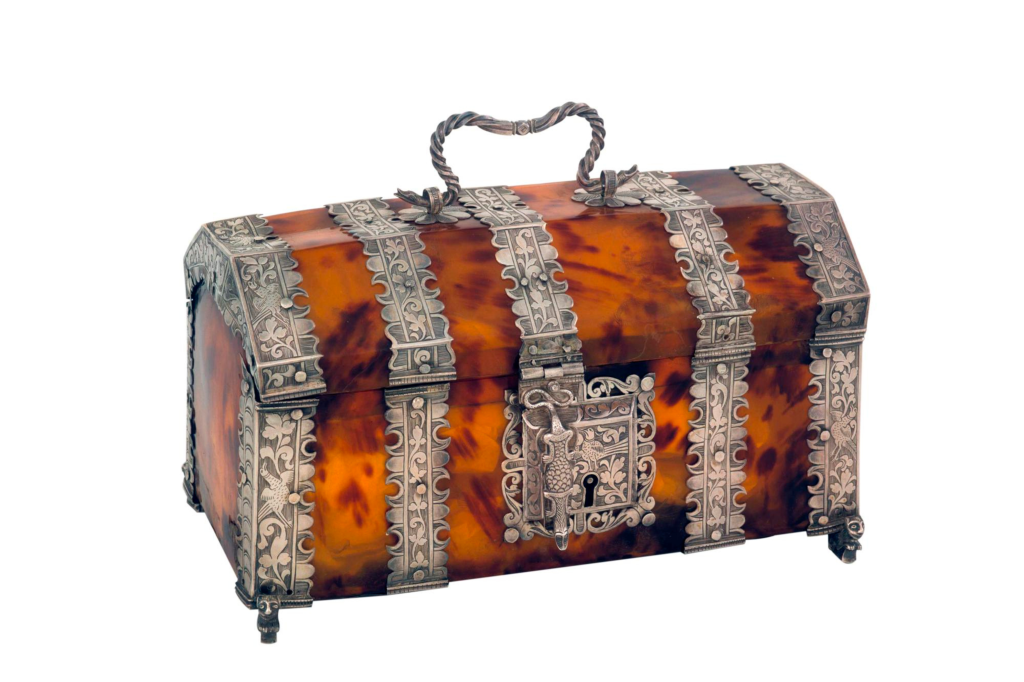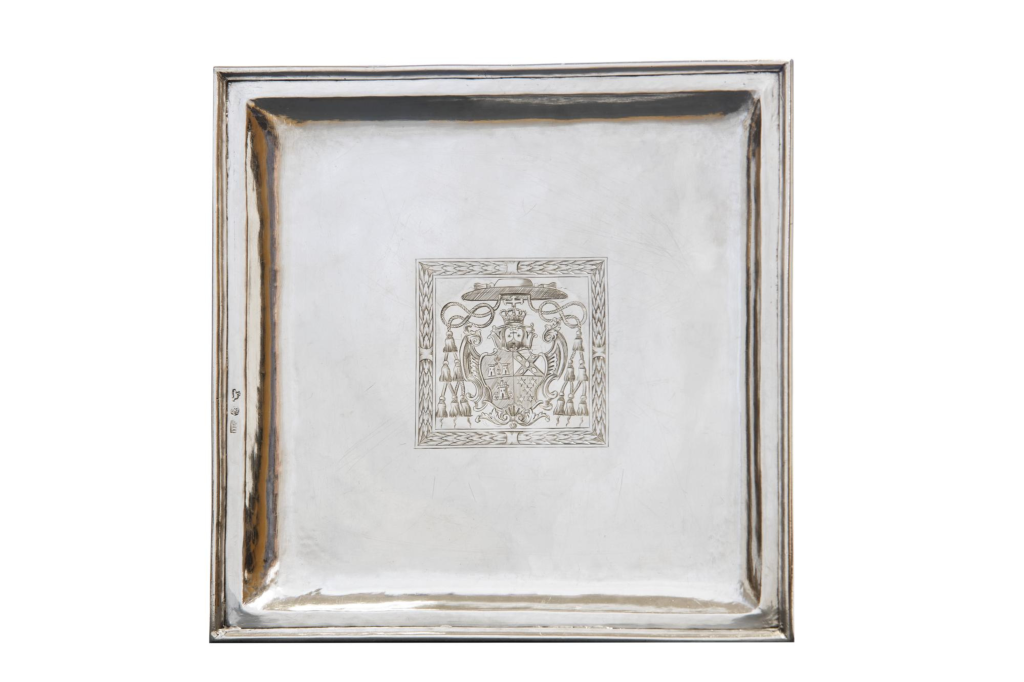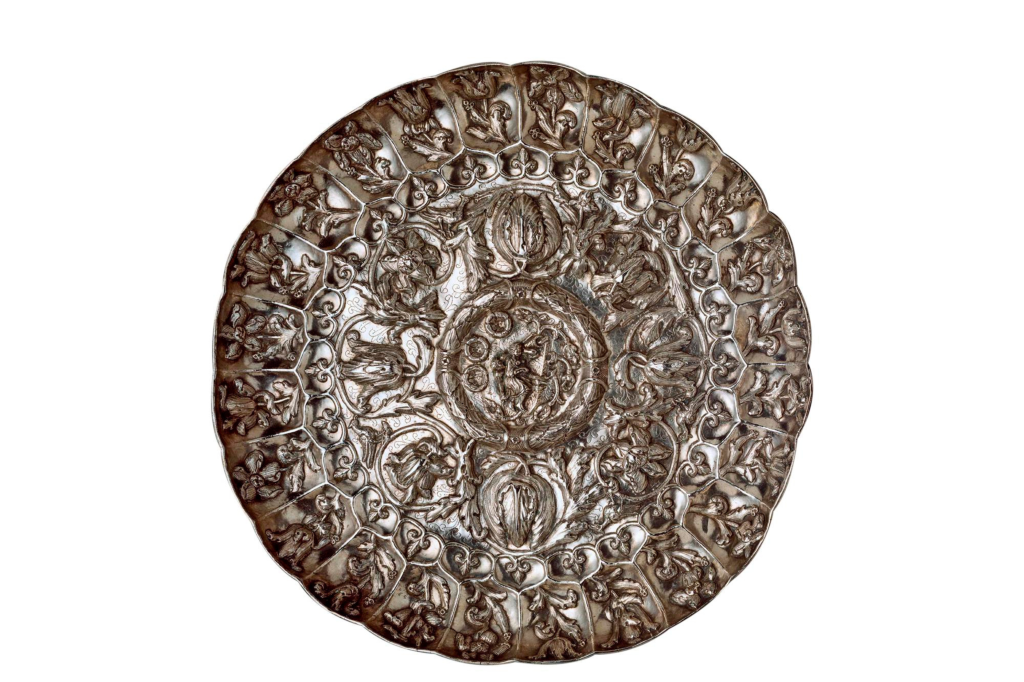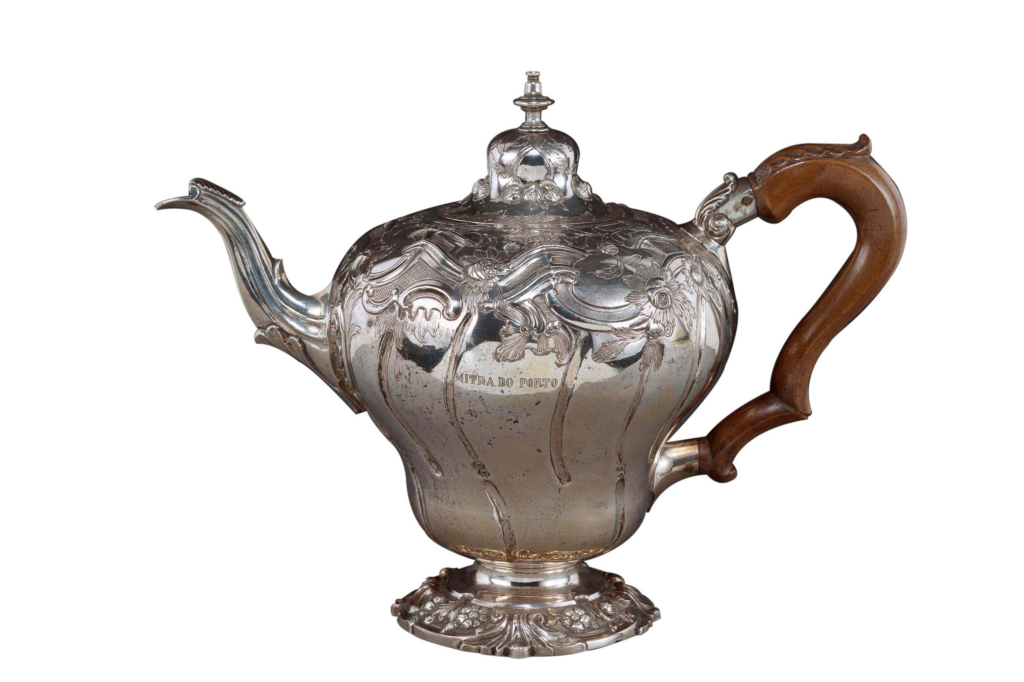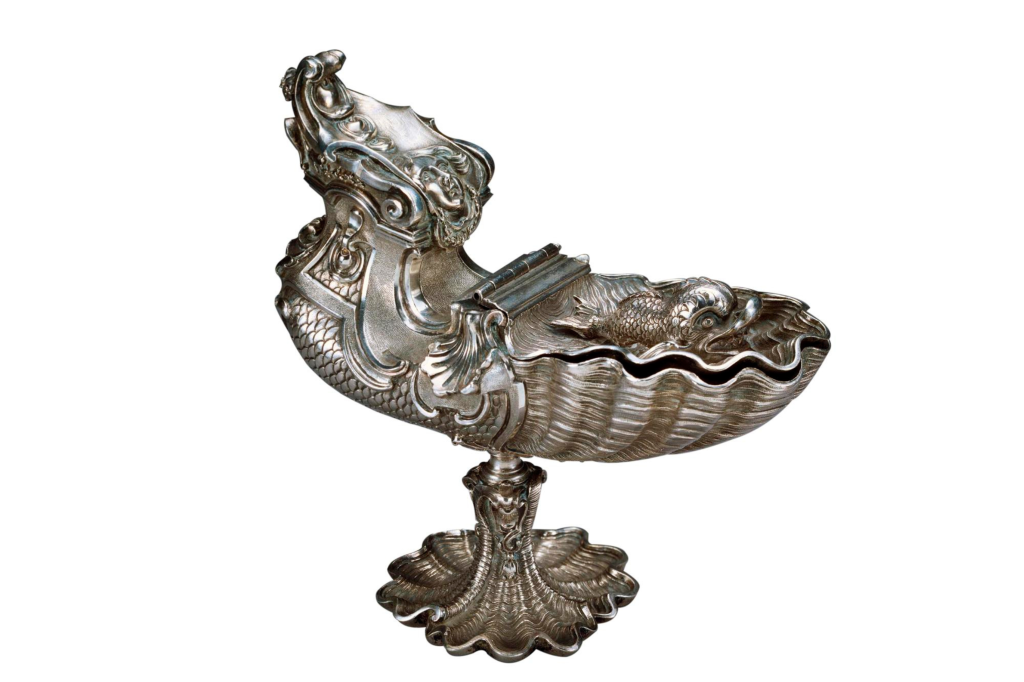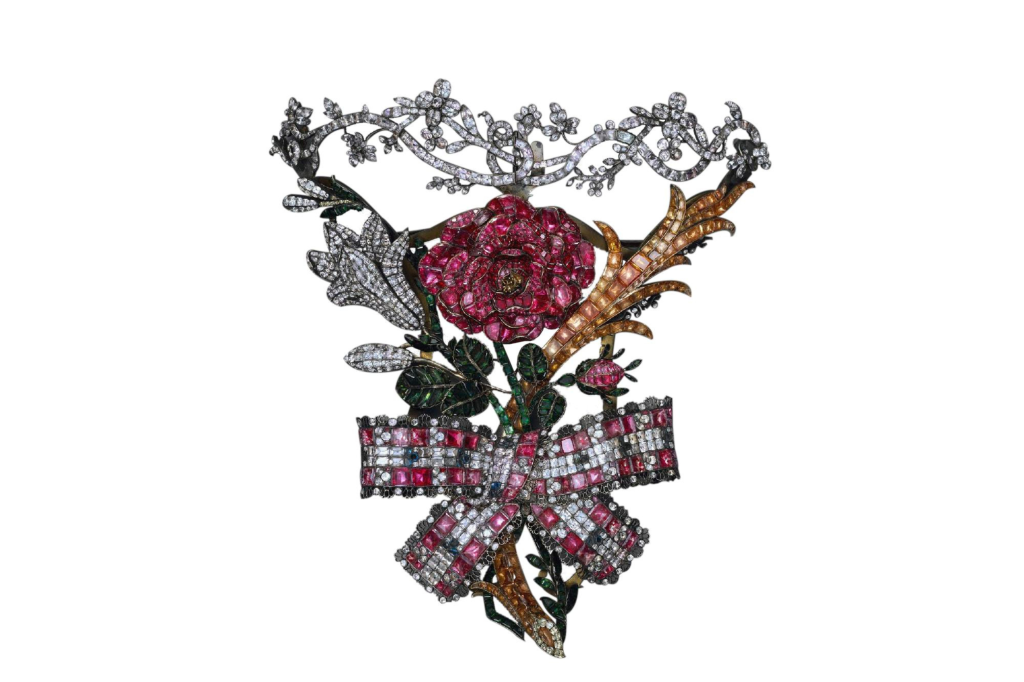
Portugal
No manufacturing marks
1775-1800
Silver, yellow topazes, chrysoberyls, garnets, quartz, beryls and colourless topazes; green and blue doublets, quartz and red-lined topazes
This bodice ornament is linked to the devotion to the Virgin of Carmel in Lisbon. The discovery of an engraving by Froes Machado (1759-1796) enabled this jewel to be linked to her cult, since it represents an image of Our Lady of Mount Carmel of Lisbon, belonging to the Carmelite convent, in which she is wearing it on her bodice. The image, which supposedly occupied the high altar of the convent church, would have had a trousseau including garments, cloaks and jewellery offered by the royal house and nobility of the time.
The piece joined the Soares dos Reis National Museum’s collection in 1945, having been part of the royal treasure kept in the vault of the Palácio das Necessidades after the establishment of the Republic in 1910.

